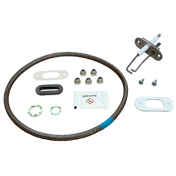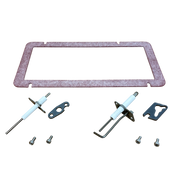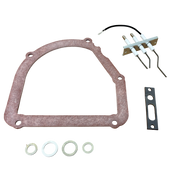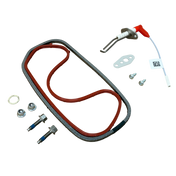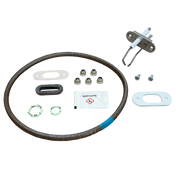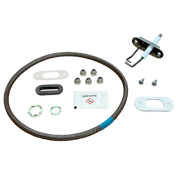Take a look outside, see the frost covering the ground and the temperatures edging worryingly close to zero; the chilly months are upon us. In this coldest of weather, just like how our fingers might cease up when left out in the cold for too long, our water pipes also stand to freeze up and stop functioning. Of course, unlike with our hands, this can’t be remedied by simply rubbing them together and sticking on a pair of gloves: frozen pipes can cause serious long-term property damage if not handled correctly.

What Causes Frozen Pipes?
Contrary to what many people believe, water pipes aren’t cleared of water when not in use: there’s more or less always some residual water waiting in idle pipes, waiting for the next time the connected water source is turned on. In warmer months, this doesn’t cause any issues at all. It’s in winter, however, when the unfortunate tendency for water to expand if frozen comes into play. When temperatures drop and that residual water starts to solidify, it also expands, completely blocking up the pipe and preventing water from travelling through it.
All of this, likely, will happen without your knowledge, meaning that when you turn on your tap for—say—a nice warming morning bath, not a drop comes out. What’s worse, the built-up pressure can even lead to a burst pipe, which is a nasty inconvenience and unpleasant cost rolled into one.
How to Spot a Frozen Pipe
So, if this can so easily happen without your knowledge, how on Earth are you meant to spot a frozen pipe before it ruins your week by bursting? Well there are a number of warning signs that can appear before a full-on pipe explosion.
- Reduced water flow through taps (if they haven’t stopped completely).
- Icy residue visible on the outside of exposed piping.
- Cracks on the outside of visible piping.
- Unusual sounds appearing from pipes and/or water heaters.
- An unpleasant smell emanating from taps or drains (caused by frozen sewage lines).
How to Defrost (Non-Burst) Frozen Pipes
If your pipes have burst, you absolutely need to bite the bullet and contact a professional. At that point, the time for DIY solutions has passed.
If you’re confident in your ability to do so, however, you can attempt to defrost a non-burst frozen pipe yourself. Simply follow these steps:
- Locate and turn off your internal stop tap to prevent water flow throughout the entire house.
- Turn on all of the cold taps inside your house. This will relieve the pressure and let water escape when the blockage starts to clear.
- If you know where the frozen pipe is, you can try turning up the heating or applying direct heat. Make sure you do this gently, though. Think hair dryers and warm cloths, not blowtorches.
- Once thawed, run a dry cloth or bundle of tissues down the pipe to check for leaks (which indicate cracks).
- If there are no cracks and the blockage appears to be clear, try turning on the water stop tap and trying out your plumbing!
Frozen pipes are an inconvenience, but if handled correctly, they needn’t become anything worse. By keeping your heating at a consistent level, exposing your pipes to said heat and investing in strong insulation, you can help prevent frozen pipes from occuring in the first place. Of course, it’s always a good idea to stay vigilant, especially this time of year.


